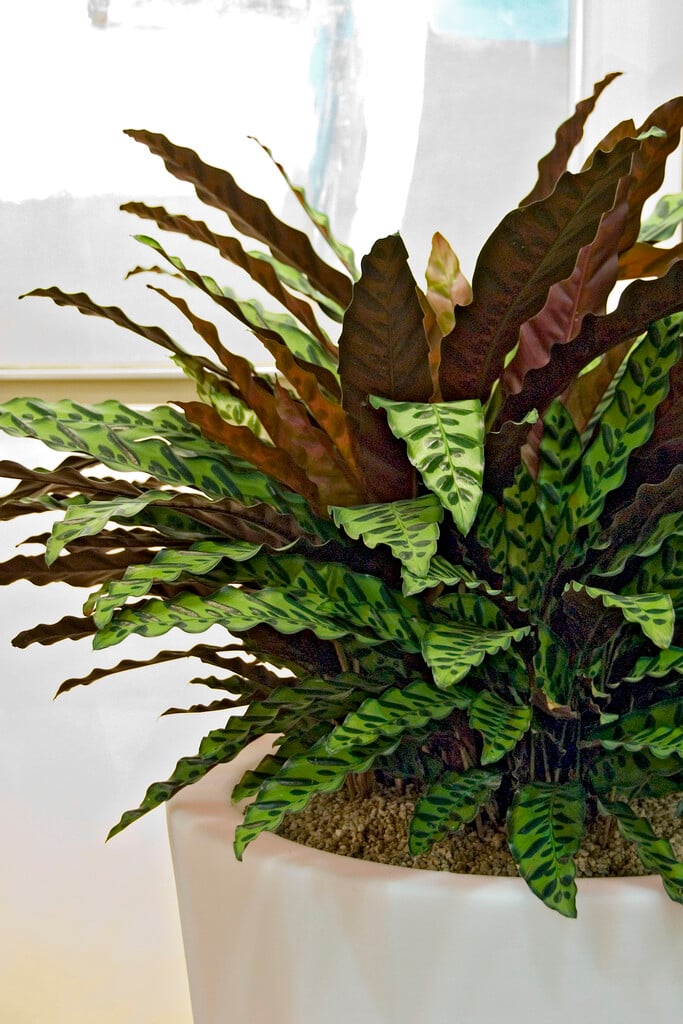Goeppertia insignis
rattlesnake plant
An evergreen perennial to 60cm, forming a clump with undulate, lance-shaped pale green leaves with dark patches either side of the midrib, deep purple beneath. Small yellow flowers appear in short spikes in summer
Size
Ultimate height
0.5–1 metresTime to ultimate height
5–10 yearsUltimate spread
0.1–0.5 metresGrowing conditions
Moisture
Moist but well–drained, Well–drainedpH
Acid, Alkaline, NeutralColour & scent
| Stem | Flower | Foliage | Fruit | |
| Spring | Purple Green | |||
|---|---|---|---|---|
| Summer | Yellow | Purple Green | ||
| Autumn | Purple Green | |||
| Winter | Purple Green |
Position
- Partial shade
Aspect
North–facing or East–facing or South–facing or West–facing
Exposure
Sheltered Hardiness
H1ABotanical details
- Family
- Marantaceae
- Native to GB / Ireland
- No
- Foliage
- Evergreen
- Habit
- Clump forming
- Genus
Goeppertia are evergreen rhizomatous perennials forming clumps of elliptic leaves, often attractively-patterned; racemes of small tubular flowers are seldom produced in cultivation. Previously included within the genus Calathea
- Name status
Correct
- Plant range
- Brazil (Rio de Janeiro)
How to grow
Cultivation
Under glass grow in peat-free potting compost with bright indirect or filtered light. Provide high humidity, draught-free conditions and a constant temperature of at least 16°C. Water moderately when in growth and keep just moist in winter. Apply a balanced liquid fertiliser monthly
Propagation
Propagate by division in late spring
Suggested planting locations and garden types
- Patio and container plants
- Low Maintenance
Pruning
No pruning required
Pests
May be susceptible to glasshouse whitefly and glasshouse red spider mite
Diseases
Generally disease-free
Get involved
The Royal Horticultural Society is the UK’s leading gardening charity. We aim to enrich everyone’s life through plants, and make the UK a greener and more beautiful place.
